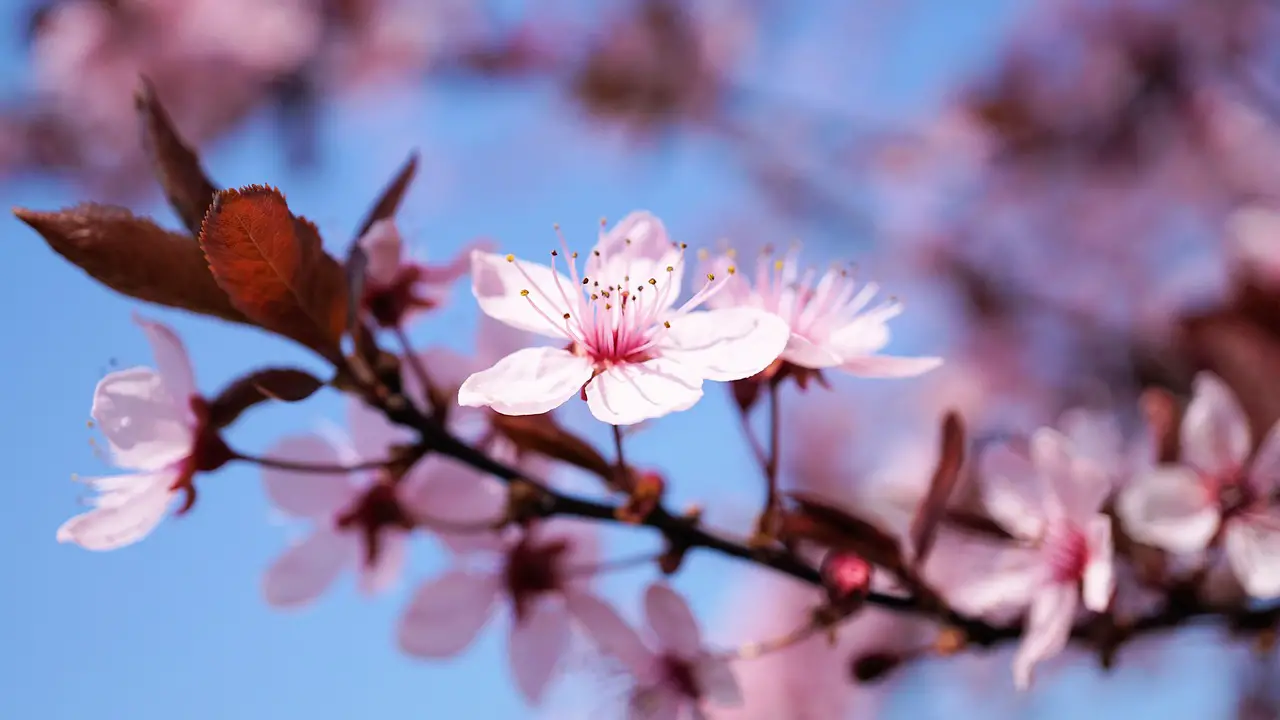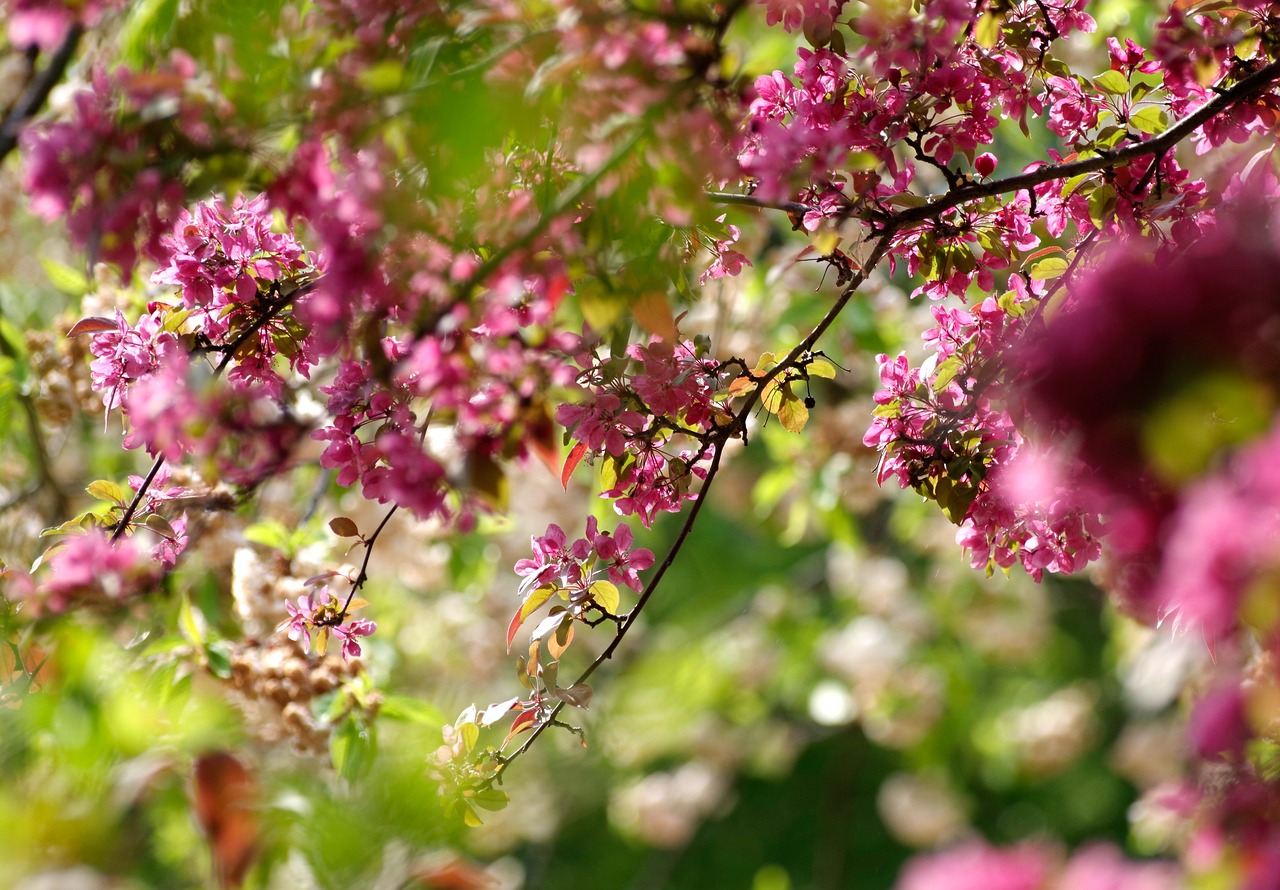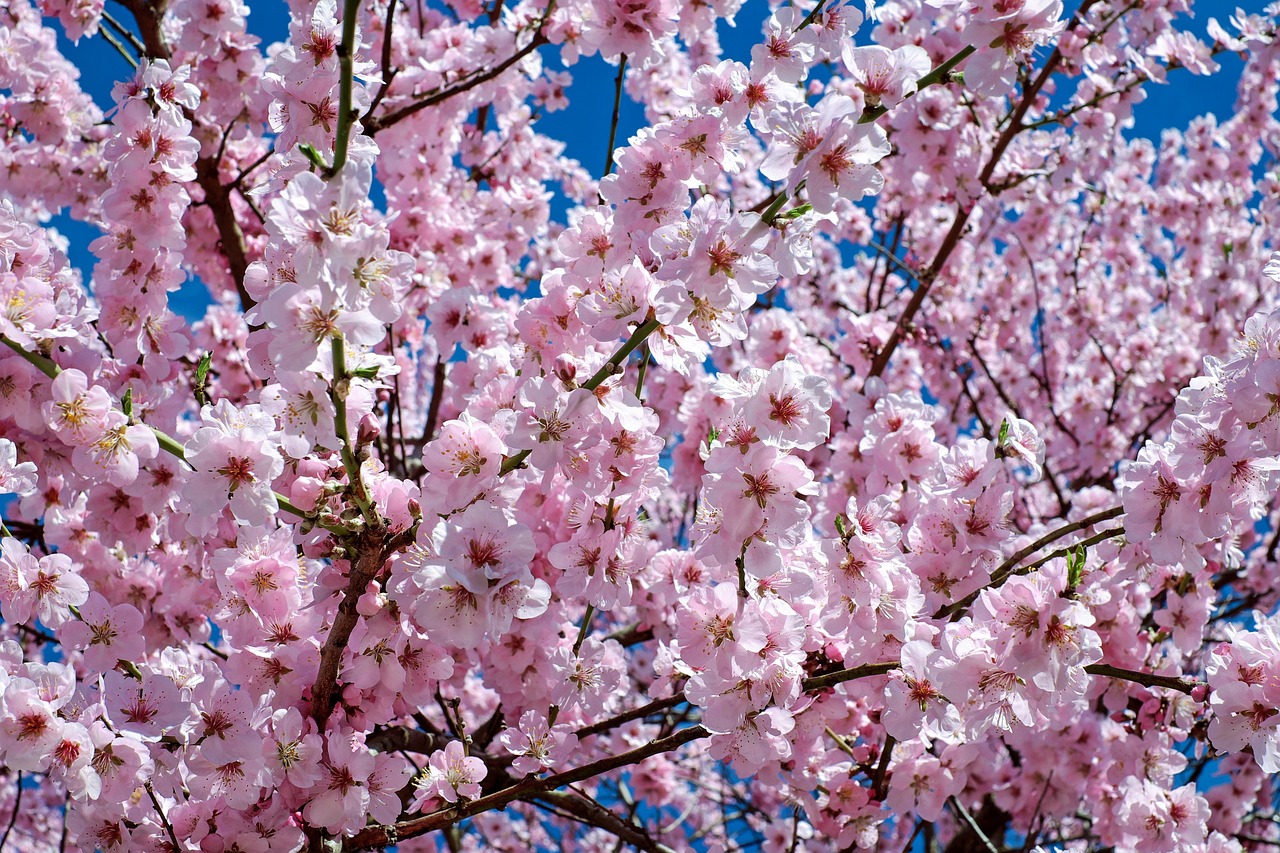A cherry tree pruning diagram helps visualize the proper techniques and timing for seasonal care. By following these guidelines, gardeners can enhance tree health, promote fruit production, and maintain an attractive shape.
Cherry trees are beloved for their stunning blossoms and delicious fruit. However, to ensure these trees thrive, proper care is essential. Pruning is a vital practice that encourages healthy growth and maximizes fruit production. Understanding when and how to prune is crucial for successful cherry tree management.

There are two main types of cherry trees: sweet cherries (Prunus avium) and sour cherries (Prunus cerasus). Each type has unique characteristics and requirements for pruning. Sweet cherries tend to grow larger and require more space, while sour cherries are often smaller and can be pruned more aggressively. Knowing the type of cherry tree you have is the first step in effective pruning.
Importance of Pruning Cherry Trees
Pruning cherry trees serves multiple purposes. Here are some key benefits:
- Health: Removing dead or diseased branches prevents the spread of pests and diseases.
- Air Circulation: Pruning improves light penetration and air flow within the canopy, reducing the risk of fungal infections.
- Shape: Regular pruning helps maintain a balanced shape, making it easier to harvest fruit.
- Fruit Quality: Proper pruning encourages better fruit quality by allowing sunlight to reach all parts of the tree.
To effectively prune a cherry tree, it’s essential to understand the best times to perform this task. The timing can vary based on the climate and specific characteristics of the tree type. Generally, pruning should be done during late winter or early spring when the tree is still dormant but before new growth begins. This timing minimizes stress on the tree and helps prevent sap loss. In some cases, light summer pruning may also be beneficial to maintain shape.

Tools Needed for Pruning
Having the right tools can make pruning easier and more efficient. Here are some essential tools for cherry tree pruning:
| Tool | Description |
|---|---|
| Pruning Shears | Used for cutting small branches and stems. |
| Loppers | Ideal for thicker branches that cannot be cut with pruning shears. |
| Saw | A pruning saw is necessary for large branches that require more power to cut. |
| Gloves | Protect your hands while working with branches and tools. |
| Safety Glasses | Keep your eyes safe from falling debris during pruning. |
Before starting, ensure all tools are clean and sharp. This practice helps make clean cuts, reducing potential harm to the tree. Dull tools can tear bark, leading to injury and increased susceptibility to disease.
Understanding Pruning Cuts
When pruning cherry trees, it’s vital to know the types of cuts you will make. There are three primary types of cuts:

- Heading Cuts: These cuts shorten a branch, encouraging new growth below the cut. Use this technique to shape the tree and promote bushier growth.
- Thinning Cuts: Thinning involves removing entire branches at their point of origin. This method increases light penetration and air circulation.
- Reduction Cuts: These cuts reduce the size of a branch without removing it entirely. This technique helps maintain the overall structure while controlling height.
Understanding how to apply these cuts effectively can greatly improve the health and productivity of your cherry tree. Each cut serves a purpose in shaping the tree and promoting new growth.
Seasonal Care After Pruning
After pruning, it is essential to provide proper care to help your cherry tree recover and thrive. Here are some tips for seasonal care following pruning:
- Watering: Ensure your tree receives adequate water, especially during dry spells.
- Mulching: Apply mulch around the base of the tree to retain moisture and suppress weeds.
- Pest Control: Monitor for pests that may target newly pruned trees. Early intervention is key.
- Nutrient Management: Consider applying a balanced fertilizer in early spring to support new growth.
Caring for your cherry tree after pruning sets the stage for a fruitful growing season. By following these strategies, you can ensure your tree remains healthy and productive throughout the year.

Common Pruning Mistakes to Avoid
Pruning cherry trees can be a rewarding endeavor, but some common mistakes can hinder the process. Being aware of these pitfalls can help you achieve better results. Here are several mistakes to watch out for:
- Pruning at the Wrong Time: Timing is crucial. Pruning too early or too late can cause stress to the tree and reduce fruit yield.
- Over-Pruning: Removing too much foliage can weaken the tree. It is essential to maintain a balance between removing unnecessary branches and preserving enough leaves for photosynthesis.
- Neglecting to Clean Tools: Using dirty tools can introduce diseases. Always clean your pruning tools before and after use.
- Ignoring Tree Structure: Failing to consider the natural growth habit of the tree can lead to an uneven shape or weak branches.
- Not Making Proper Cuts: Improper cuts can damage the tree. Make sure to cut at the correct angle and just above a bud or lateral branch.
Identifying the Right Time to Prune
Understanding when to prune cherry trees is vital for their health. Pruning at the right time encourages vigorous growth and fruit production. Here’s an overview of the best times to prune:
- Late Winter to Early Spring: This is the ideal time for major pruning when the tree is dormant. It prepares the tree for the upcoming growing season.
- Summer Pruning: Light pruning in summer can help control growth and shape the tree. This approach is often used for trees that have been overgrown.
- Post-Harvest Pruning: After harvesting cherries, some light pruning may be beneficial. This helps maintain shape and promotes new growth for the next season.
The specific timing can vary based on local climate conditions. Therefore, it is important to consider regional weather patterns when planning your pruning schedule.
How to Create a Pruning Plan
A well-thought-out pruning plan can simplify the process and ensure that all necessary tasks are completed. Here’s how to create an effective pruning plan for your cherry trees:
- Assess Your Trees: Start by evaluating the health and structure of your trees. Identify any dead, diseased, or crossing branches that need attention.
- Set Goals: Determine what you want to achieve with pruning. Consider factors like tree health, fruit yield, and aesthetics.
- Schedule Your Prune Dates: Plan specific dates for each pruning session based on the ideal times discussed earlier.
- Document Your Actions: Keep track of what you prune each season. This documentation can help you make informed decisions in future years.
Pest and Disease Management Post-Pruning
Proper pest and disease management is critical after pruning, as open cuts can attract pests or allow diseases to enter. Here are some steps to take:
- Inspect Regularly: Frequently check your trees for signs of pests or disease, especially in the weeks following pruning.
- Apply Treatments: If pests are detected, consider using organic pesticides that are safe for fruit trees. Always follow label directions.
- Cull Infected Branches: If you notice any diseased branches during inspections, remove them immediately to prevent the spread.
- Use Sealants Wisely: Some gardeners use wound sealants on larger cuts to protect against pests and diseases. However, research suggests that this practice may not always be necessary.
The Role of Fertilization in Recovery
Fertilization plays a crucial role in helping your cherry tree recover from pruning. Here’s how to approach fertilization:
- Selecting Fertilizer: Choose a balanced fertilizer that contains nitrogen, phosphorus, and potassium. Look for a formulation designed for fruit trees.
- Timing: Apply fertilizer in early spring as new growth begins. This timing supports recovery and boosts fruit production.
- Application Method: Follow label instructions for application rates. Generally, you should spread the fertilizer evenly around the base of the tree, avoiding direct contact with the trunk.
An effective fertilization strategy speeds up recovery and enhances overall tree performance after pruning.
The Importance of Watering
Watering cherry trees properly is essential after pruning. Here are some tips for effective watering:
- Irrigation Schedule: Water deeply but infrequently to encourage deep root growth. Aim for about 1 inch of water per week during dry periods.
- Avoid Overwatering: Too much water can lead to root rot. Ensure your soil has good drainage and monitor moisture levels regularly.
- Mulching Benefits: As mentioned earlier, mulch retains moisture in the soil while preventing weeds from competing with your tree for nutrients.
A well-planned watering routine supports your cherry tree’s recovery and contributes to its long-term health.
Understanding Cherry Tree Growth Stages
To effectively care for cherry trees, it is essential to understand their growth stages. Each stage has specific needs regarding pruning, watering, and fertilization. Here are the primary growth stages of cherry trees:
- Bud Break: This occurs in early spring when the buds begin to swell and open. It’s a critical time to monitor for any signs of disease or pests.
- Flowering: Cherry trees are known for their beautiful blossoms. This stage typically lasts a few weeks and is crucial for pollination.
- Fruit Development: After flowering, the fruit begins to form. This stage requires adequate watering and nutrient support.
- Maturation: As the fruit ripens, the tree focuses its energy on developing high-quality cherries. Proper care during this stage ensures a good harvest.
- Leaf Drop: In late fall, leaves will drop as the tree prepares for dormancy. This is a good time for winter pruning.
Seasonal Care Throughout the Year
Cherry trees require different types of care throughout the year. Understanding these seasonal needs can enhance tree health and fruit production. Here’s a breakdown of what to do in each season:
Spring
Spring is a vital time for cherry tree care. Here are some key tasks to focus on:
- Pruning: Perform any remaining pruning before new growth begins.
- Pest Management: Monitor for pests that emerge with warmer weather. Use organic pesticides if necessary.
- Fertilization: Apply a balanced fertilizer as the tree comes out of dormancy to support new growth.
- Watering: Ensure consistent watering as temperatures rise and rainfall may become sporadic.
Summer
Summer is a busy time for cherry trees as they produce fruit. Here’s what to focus on:
- Watering: Continue to water deeply, especially during dry spells. Mulch can help retain soil moisture.
- Pest Monitoring: Keep a close eye on pests and diseases that may affect fruit quality. Implement control measures as needed.
- Light Pruning: Conduct light pruning to remove any dead or diseased branches and to maintain shape.
Fall
As the growing season winds down, fall care becomes important:
- Harvesting: Gather cherries before they over-ripen or fall from the tree.
- Post-Harvest Care: After harvesting, inspect trees for pests and diseases.
- Watering Adjustments: Reduce watering as temperatures cool and rainfall increases.
- Preparation for Winter: Apply mulch to protect roots from freezing temperatures.
Winter
Winter is a time of dormancy for cherry trees, but there are still important tasks to complete:
- Pruning: Late winter is an ideal time for major pruning when the tree is dormant.
- Pest Control Preparations: Inspect trees for signs of pests and consider applying dormant oil sprays if necessary.
- Soil Testing: Conduct soil tests to assess nutrient levels and plan for spring fertilization.
The Role of Soil in Cherry Tree Health
The health of your cherry tree is closely linked to the quality of the soil in which it grows. Here are some factors to consider regarding soil health:
- Soil Type: Cherry trees prefer well-draining soils that are rich in organic matter. Sandy loam is often considered ideal.
- pH Levels: The optimal pH for cherry trees is between 6.0 and 7.0. Testing your soil can help you determine if amendments are needed.
- Nutrient Content: Ensuring that your soil has adequate levels of nitrogen, phosphorus, and potassium will support healthy growth and fruit production.
Creating an Ideal Planting Environment
Caring for cherry trees begins with ensuring that they are planted in an ideal environment. Here are some tips for creating the best conditions:
- Selecting a Location: Choose a site that receives full sun for at least six hours a day. Good sun exposure promotes healthy growth and fruit development.
- Avoiding Low Spots: Avoid planting in low spots where cold air can settle, as this can increase frost risk during spring.
- Spacing Requirements: Ensure proper spacing between trees to allow air circulation and sunlight penetration, which helps prevent diseases.
- Soil Preparation: Before planting, amend the soil with compost or other organic matter to improve drainage and nutrient content.
A well-planned planting environment sets the foundation for a thriving cherry tree that produces abundant fruit year after year.
Caring for Young Cherry Trees
Younger cherry trees require special attention as they establish themselves. Here are some essential care tips for young trees:
- Watering Regularly: Young trees need consistent moisture to develop strong roots. Water them frequently, especially during dry spells.
- Avoiding Fertilizer Overuse: Young trees don’t require heavy fertilization. Use a diluted fertilizer to support growth without overwhelming them.
- Pest Vigilance: Watch for pests and diseases that may target young trees, as they are often more vulnerable in their early years.
- Caging or Staking: If necessary, stake young trees to prevent wind damage and ensure they grow straight.
Caring for young cherry trees sets the stage for their future health and productivity, ensuring they grow strong and produce fruit as they mature.
Common Cherry Tree Diseases and Pests
In addition to proper pruning and care, being aware of common diseases and pests that affect cherry trees can help maintain their health. Here are some of the most prevalent issues:
- Brown Rot: This fungal disease causes fruit to rot on the tree. It can be prevented by maintaining good air circulation and removing infected fruit.
- Powdery Mildew: A white fungal growth on leaves, powdery mildew can be controlled by ensuring proper spacing of branches and applying fungicides if necessary.
- Cherry Fruit Fly: This pest lays eggs in the fruit, leading to premature dropping. Traps can be used to monitor and manage their population.
- Scale Insects: These pests attach to the bark and sap of trees, weakening them. Regular inspections and horticultural oils can help control infestations.
Understanding the Cherry Tree Lifespan
Cherry trees can have a significant lifespan, often ranging from 15 to 30 years, depending on the variety and care they receive. Here are some factors that influence their longevity:
- Variety: Some cherry varieties, like sweet cherries, may live longer than sour cherries.
- Cultural Practices: Proper pruning, watering, and disease management contribute to a longer lifespan.
- Site Conditions: Trees planted in optimal soil and weather conditions tend to live longer and produce more fruit.
By understanding the expected lifespan of your cherry trees, you can better plan for their care and ensure they remain productive throughout their lives.
Creating a Cherry Tree Care Calendar
To simplify your cherry tree care routine, creating a care calendar can be beneficial. This calendar should outline all the necessary tasks by season. Here’s an example of what to include:
| Season | Tasks |
|---|---|
| Spring | Pruning, fertilizing, pest monitoring, watering |
| Summer | Watering, light pruning, pest management, monitoring fruit development |
| Fall | Harvesting, post-harvest inspections, reducing watering, preparing for winter |
| Winter | Major pruning, pest control preparations, soil testing |
A care calendar helps keep you organized and ensures that no vital tasks are overlooked during the growing season.
Helpful Resources for Cherry Tree Care
If you’re looking to expand your knowledge on cherry tree care or seek assistance, several resources can be beneficial:
- Local Extension Services: Many universities offer extension services that provide expert advice tailored to your region.
- Gardening Books: There are numerous gardening books that focus specifically on fruit trees and cherry trees.
- Online Forums: Gardening forums and social media groups can connect you with fellow cherry tree enthusiasts who share tips and experiences.
- YouTube Tutorials: Many gardening experts share video tutorials on pruning techniques and tree care practices.
Tapping into these resources can enhance your understanding and improve your cherry tree management skills.
Final Thoughts
Caring for cherry trees involves understanding their unique needs throughout various growth stages. From proper pruning techniques to seasonal maintenance tasks such as watering, fertilizing, and pest management, each step is crucial for promoting healthy growth and productivity. Recognizing the signs of pests and diseases will help you take timely actions to protect your trees.
A well-planned care routine, combined with knowledge of cherry tree biology and environmental requirements, sets the foundation for long-term success. Whether you are nurturing young saplings or maintaining mature trees, each action contributes to a thriving cherry orchard that yields delicious fruit year after year. By implementing the strategies outlined in this article, you can ensure your cherry trees flourish in your garden.
Your dedication to learning about proper seasonal care and pruning practices will pay off in beautiful blossoms and bountiful harvests. Enjoy the journey of gardening with cherry trees as they bring joy and beauty to your landscape.
